*NURSING > QUESTIONS and ANSWERS > ATI Maternal Newborn Practice | Questions and Answers | Latest 2020 / 2021 (All)
ATI Maternal Newborn Practice | Questions and Answers | Latest 2020 / 2021
Document Content and Description Below
ATI Maternal Newborn Practice | Questions and Answers | Latest 2020 / 2021 A nurse is caring for a client who has hyperemesis gravidarum and is receiving IV fluid replacement. Which of the followin... g findings should the nurse report to the provider? BUN 25mg/dL - The nurse should report an elevated BUN to the provider since it can indicate dehydration. A nurse in a prenatal clinic is assessing a group of clients. Which of the following clients should the nurse request the provider see first? A client who is at 11 weeks gestation and reports abdominal cramping - When using the urgent vs. nonurgent approach to client care, the nurse should determine that the priority finding is a client who is at 11 weeks gestation and reports abdominal cramping. Abdominal cramping can indicate an ectopic pregnancy or manifestations of spontaneous abortion. The nurse should request that the provider see this client first. A nurse is assessing a client who gave birth vaginally 12 hours ago and palpates her uterus to the right above the umbilicus. Which of the following interventions should the nurse perform? Assist the client to empty her bladder. - The nurse should assist the client to empty her bladder because the assessment findings indicate that the bladder is distended. This can prevent the uterus from contracting, resulting in increased vaginal bleeding or postpartum hemorrhage. Simethicone should be administered to reduce bloating, discomfort, or pain caused by excessive gas. A nurse is caring for a postpartum client who is receiving heparin via a continuous IV infusion for thrombophlebitis in her left calf. Which of the following actions should the nurse take? Maintain the client on bed rest. - The client should remain on bed rest to decrease the risk of dislodging the clot, which could cause a pulmonary embolism. A client receiving anticoagulant therapy, such as heparin, should not receive aspirin due to the risk of bleeding. The nurse should avoid massaging the affected leg to decrease the risk of dislodging the clot, which could cause a pulmonary embolism. The nurse should apply warm compresses to the affected area to promote circulation and decrease edema. [Show More]
Last updated: 2 years ago
Preview 1 out of 16 pages

Buy this document to get the full access instantly
Instant Download Access after purchase
Buy NowInstant download
We Accept:

Reviews( 0 )
$14.00
Can't find what you want? Try our AI powered Search
Document information
Connected school, study & course
About the document
Uploaded On
Nov 21, 2020
Number of pages
16
Written in
Additional information
This document has been written for:
Uploaded
Nov 21, 2020
Downloads
0
Views
196








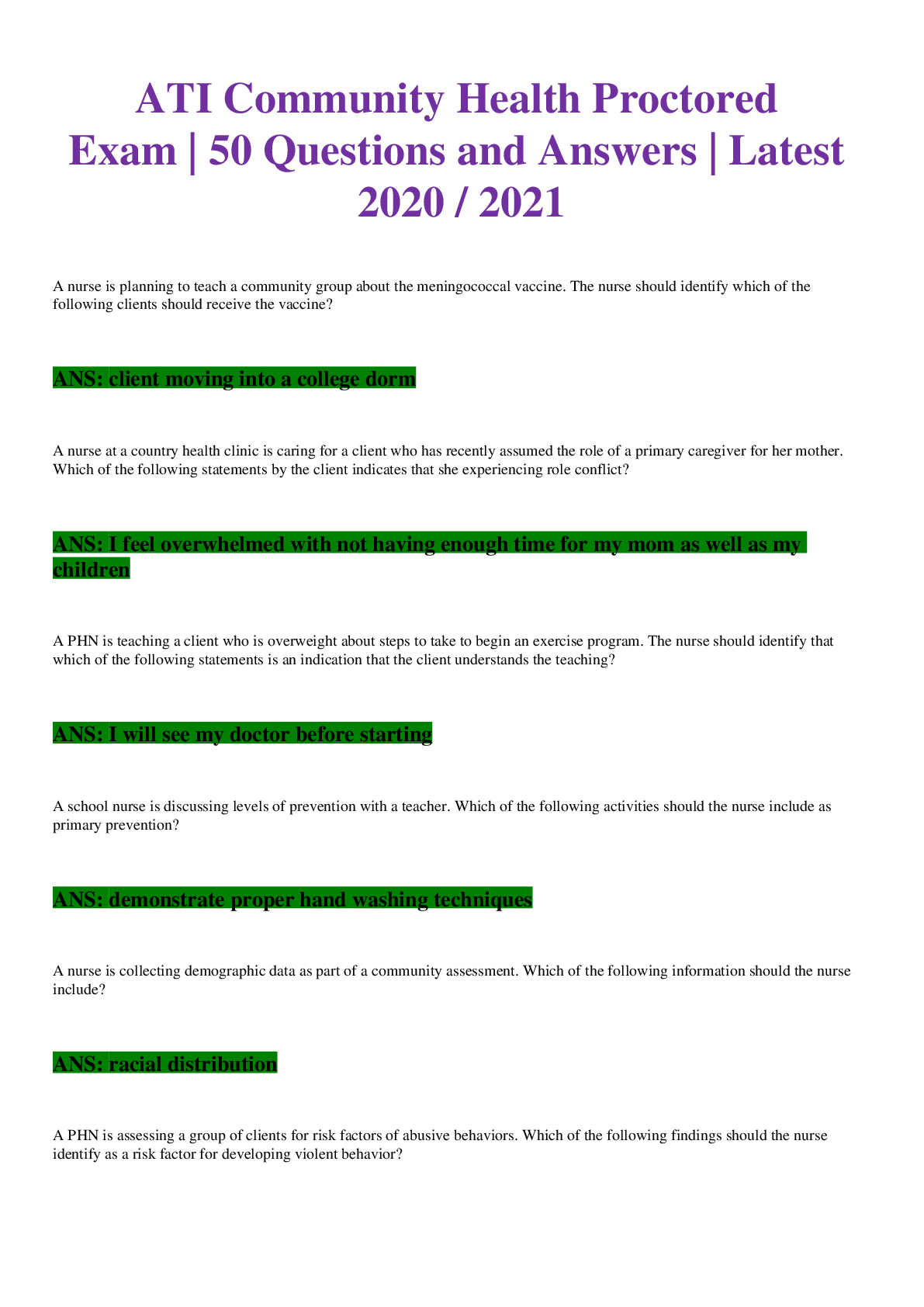


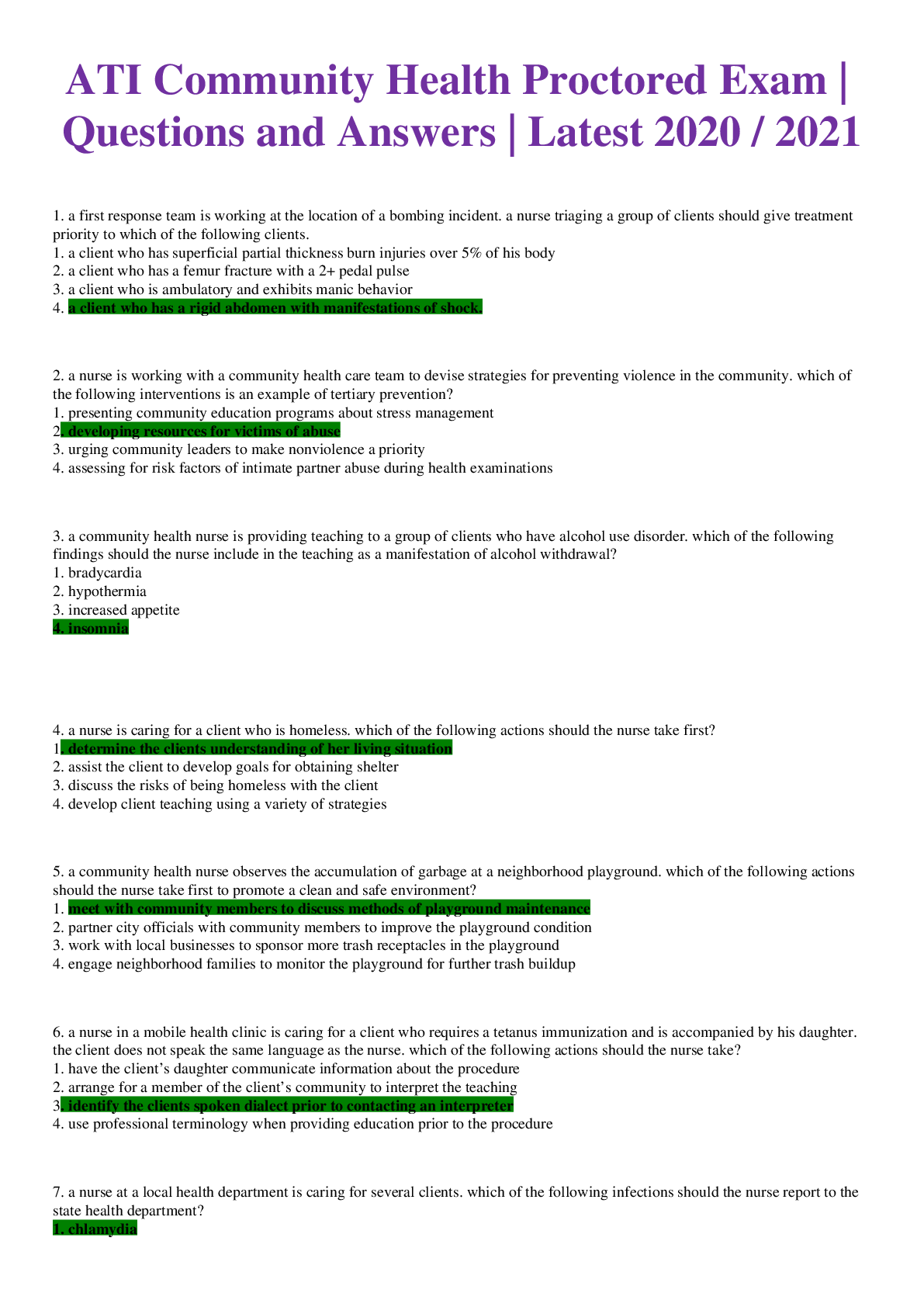


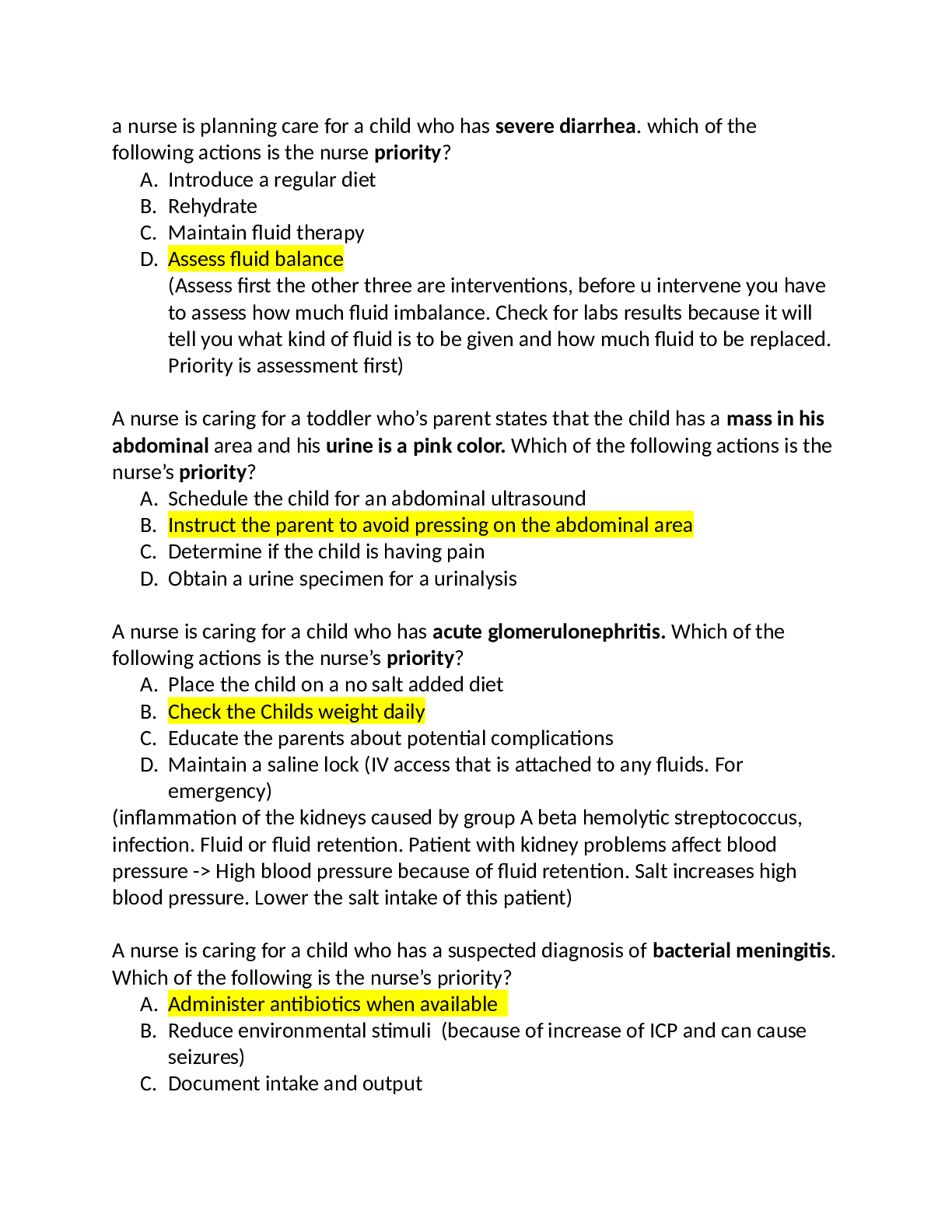

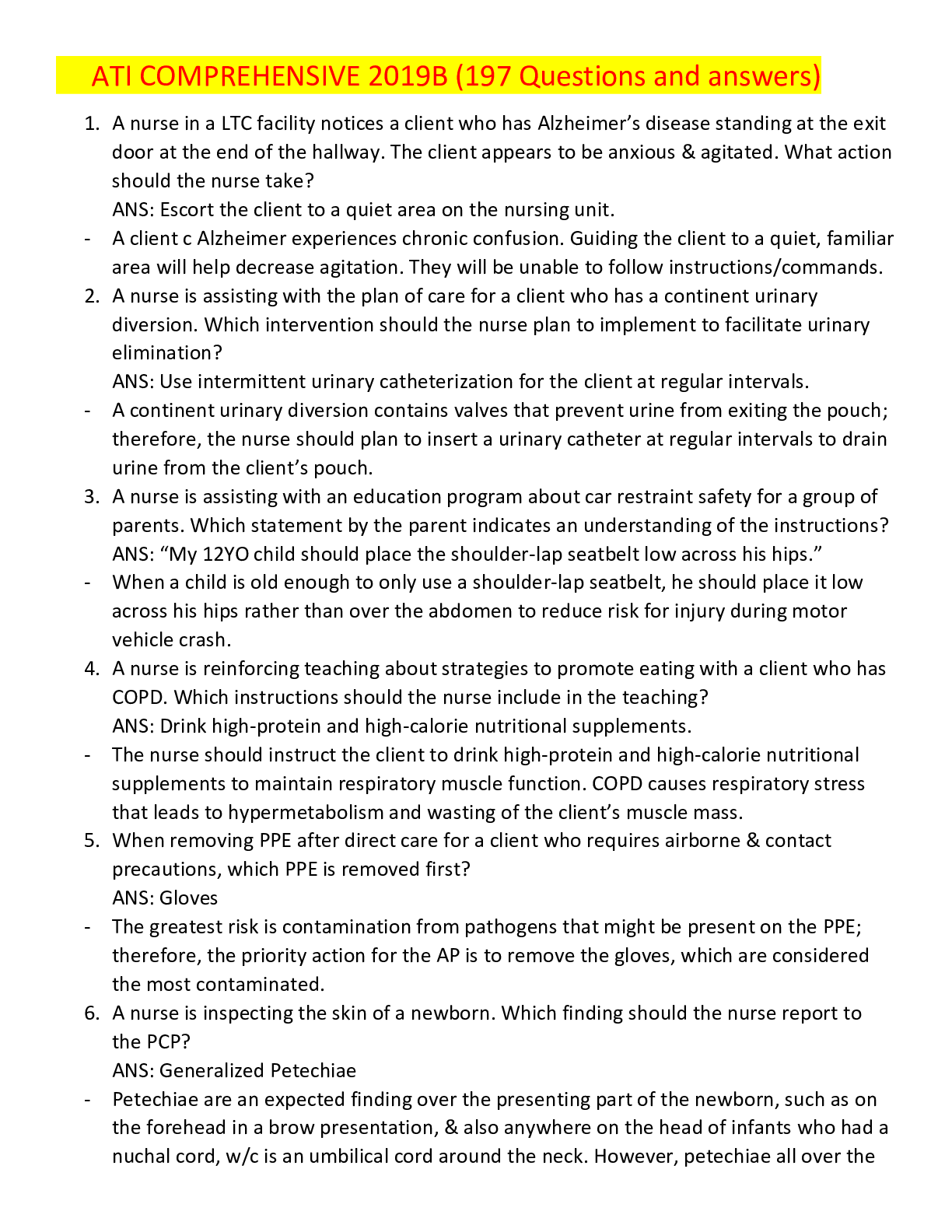

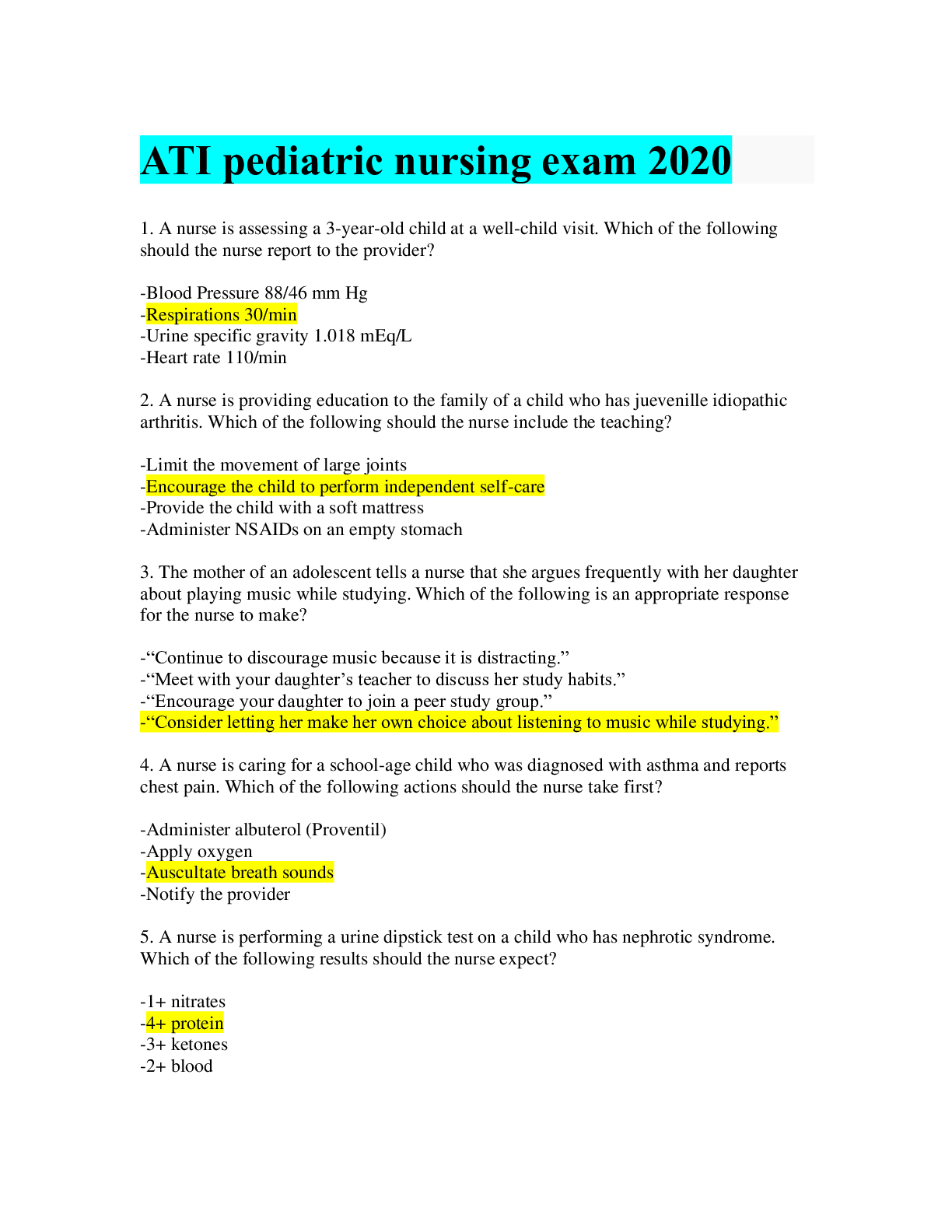



 – Miami Dade College.png)
Perop.png)


